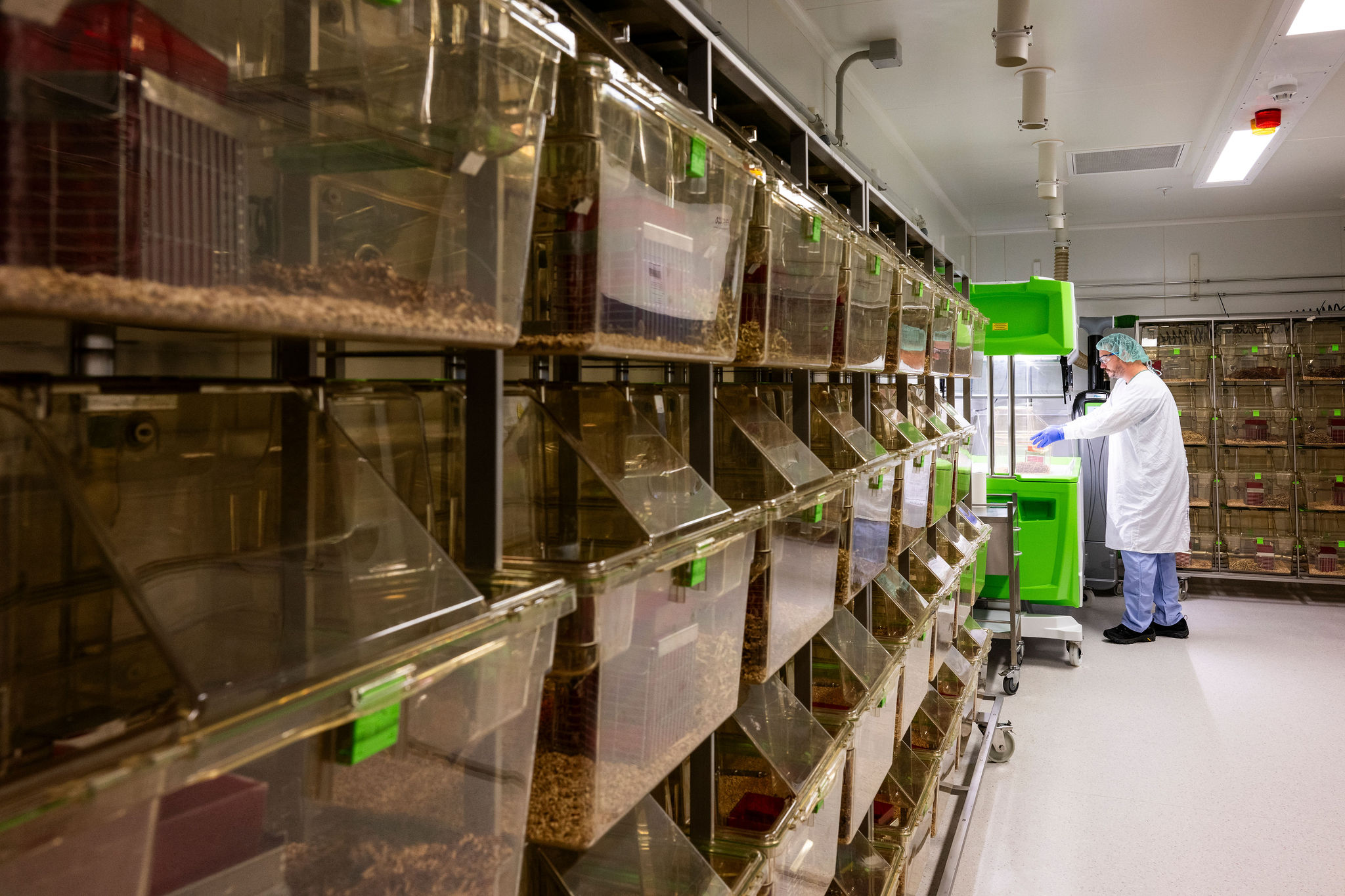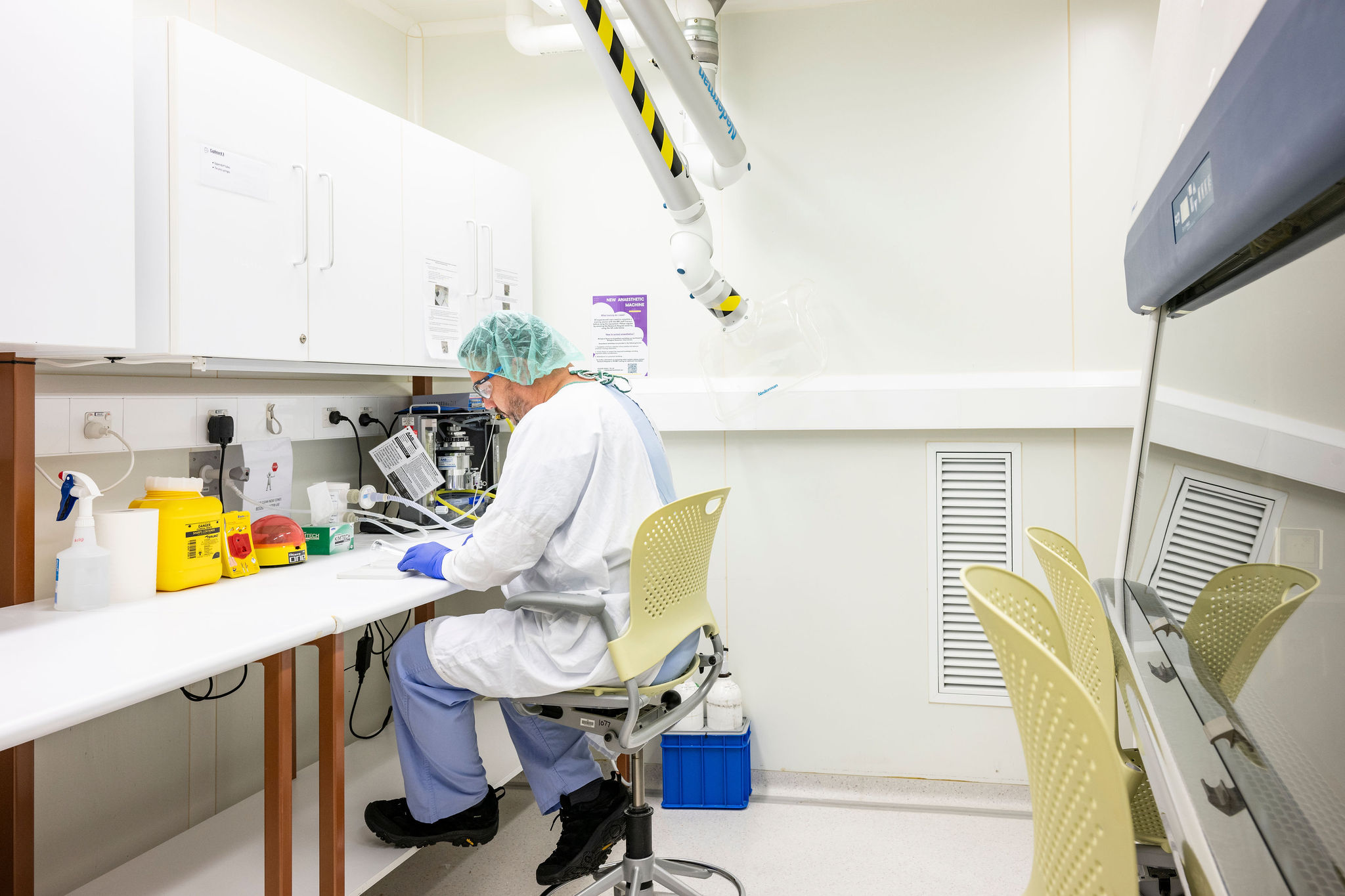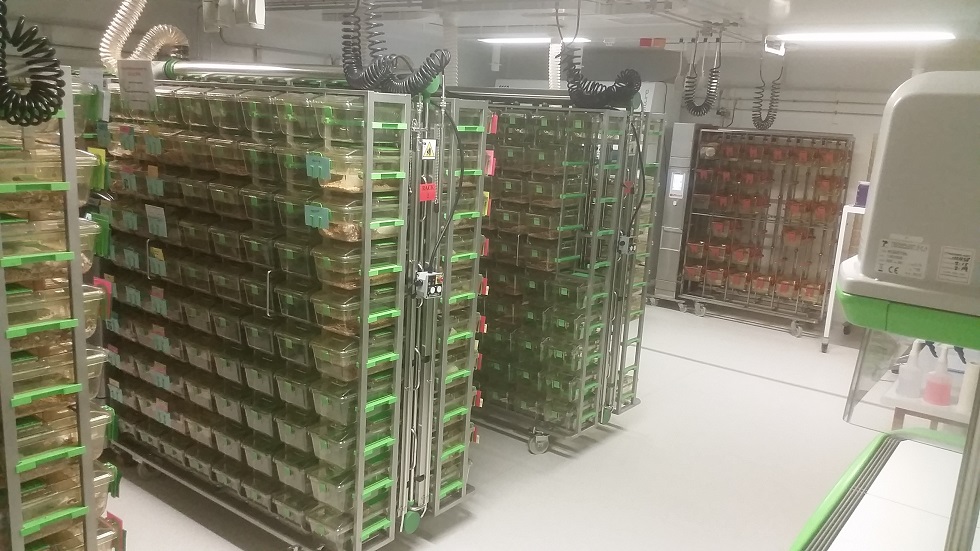BR-TRI | Rodents
At a glance
- Holding rodents within PC2 conditions and PC3 containment.
- Multiple spaces available for procedures, surgery and training.
- Conveniently located at the PA Hospital Woolloongabba.
- Includes a breeding wing providing expert colony management services.
- Includes a research wing providing high level technical capabilities.
- BR staff operate the Germ-Free and Gnotobiotic Facility, and the Human Immune Model Facility (HIMF).
Our team supports research projects by providing comprehensive housing solutions in various microbiological exclusion conditions, from IVC systems to germ-free environments, as well as containment setups for PC2/PC3 and Quarantine Approved Premises. We facilitate the import and export of specimens, ensuring post-arrival housing and compliance with regulatory release requirements (QAP). Additionally, we provide support for breeding and colony management alongside administration services such as project planning, resource allocation, and guidance on ethics and regulatory compliance.
We conduct training in handling and restraint techniques as well as project-specific surgeries, and maintain a surgical space equipped with Isoflurane vaporizers, complemented by essential veterinary services integral to supporting research efforts.
Capabilities
- Highly trained and experienced specialist BRF staff and veterinarians provide a range of technical services from ethics generation and experimental design support, to hands-on interventions and monitoring of animals.
- In addition to expert technical capabilities, BRF offers access to specialty equipment and all levels of user handling and procedural training.
- The BRF site also houses TRI’s Preclinical Imaging Facility, Gnotobiotics Facility and soon to come, the Human Immune Model Facility.
Equipment
TRI’s BRF is a Tecniplast Centre of Excellence within Australia, recognising our leadership in the preclinical modelling industry and commitment to the ongoing use of equipment and facilities that support the best quality of animal care and research outcomes.



Inductions
Visit Biological Resources Inductions.
Procedure Room Bookings
Facility metrics
Current users can use the below facility information to report in enough detail facility information. Reporting animal research in adherence with the ARRIVE guidelines ensures transparent and thorough reporting. This enables readers and reviewers to scrutinise the research adequately, evaluate its methodical rigour, and reproduce the methods or findings. Research groups considering non-standard caging (opting out of a standard cage), should consider the following article to support understanding about indirect impacts to research design Reproducibility and Rigor in Animal-Based Research.
BR - TRI Metrics 2023 (PDF, 109.6 KB)
BR - TRI Metrics 2024 (PDF, 430.3 KB)
Pathogen exclusion list
| Pathogen exclusion list - Immunocompromised room 1002 only | |
|---|---|
In addition those listed under Breeding wing
|
|
Health reports
BR - TRI Health report 2022 (PDF, 343.9 KB)
BR - TRI Health report 2023 (PDF, 287.3 KB)
BR - TRI Health report Mice 2024 (PDF, 196.4 KB)
BR - TRI Health report Rat 2024 (PDF, 82.1 KB)
BR - TRI Health report 2024 (PDF, 235.9 KB)
Contact
UQBR Senior Manager, Research Facilities and Infrastructure - Tanya Lennane
07 3343 7152
